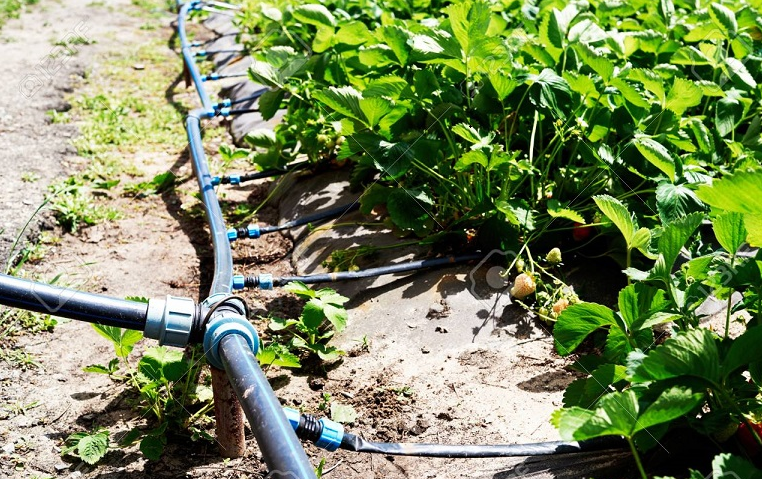The Nigerian agricultural space is the game at the moment, and this is just the truth. Many investors are venturing into agriculture either as participant agripreneurs or indirect investors.
The sector has, within this pandemic, redirected focus to it once again. Inasmuch as there could be dropouts as we progress, currently, most companies are looking at how to divest their investments, in order not to be caught napping again as happened with the emergence of this deadly COVID-19 pandemic.
Agriculture has created many facets of job openings, thereby minimizing the number of unemployed Nigerians.
Lots of new techniques have come up to enhance the productivity of agriculture in recent times. Farming has mostly been hindered by over reliance on wet farming which largely depends on rains to grow crops. This system has changed in mechanized agriculture in most developed economies.
In order to farm during both the rainy and dry seasons (wet and dry farming), the concept of drip irrigation was developed. Irrigation has been the age-long practice of giving water to plants using various means apart from natural, direct rain fall.
To ease the challenges of watering massive farmlands, farmers most times site their farms near running streams and rivers. But this has gross limitations because of its manual application.
Drip irrigation came in handy to solve this. It is relatively new in Nigeria and farmers are gradually adopting it as a technique for all-year round farming.
Drip irrigation is a type of irrigation that sends water to plants’ root zones directly using a network of pipes connected to a reliable water source.
These pipes have emitters installed in them through which water is disseminated. This allows the plants to receive water as at when needed. It could be regulated to drop at set periodic frequency.
There is more to drip irrigation than just watering of plants. Through this system, nutrients can be passed directly to the plant root zones thereby saving manpower, time and cost. This is called fertigation and makes it a very efficient way to manage farms. Fertigation via drip irrigation uses venture injectors to apply high quality soluble fertilizers in small, required doses to plants on a daily basis.
Drip irrigation is also used for chemigation through which pesticides are applied to plants’ roots and the soil in order to kill harmful microbes, nematodes, insects, and so on using dosing pumps, drip tapes and venture pumps.
- Have you read?
- Commodities Export Business Risks
- New Agribusiness Opportunities for Economic Growth Post COVID-19 Pandemic
Having enumerated some of the uses above, it is imperative that we emphasize the importance in maximizing its usage. This borders on efficiency and effectiveness. Both have to do with time and value.
To get the best of drip irrigation, the role of learning cannot be overemphasized. Being relatively new in Nigeria, lots of new users misapply this investment-turning technique. It is advisable to toe the following steps while deciding to use this farm technique:
- Before you buy – be sure to consult an expert who would advice on the type of drip tapes or tubes to use based on farm topography. This is because some types of tubes are most suitable for undulating lands while some are for flat lands; some are very thick while some have high water emitting capacity. Also, the expert would need to design a suitable drip irrigation layout for your farm based on the size of the farm. This design takes into cognizance such issues as water source, water flow rate, water pressure, etc.
- Installation – having done the above, the expert would help you ensure you do not purchase substandard systems as he would recommend the dealers of original, high quality, durable types. Ensure that the type you are getting is the type that can fertigate and chemigate, ordinarily, it will be less efficient if it does not have these features. Also be sure to use the right water pump. Using a 0.5hp submersible pumping machine to power an 8-acre farm would be absolutely inefficient. Insist on installing this system with filters.
- Training – after installation, you need to undergo a hands-on training and guidance from an expert so as to learn how to efficiently and effectively use the technology to avoid malfunctioning or under-using the system. This training remains ongoing for some time till you understand the nitty gritty of the system for a rounded maximization.
- Maintenance – while using the system, always ensure to carry out periodic maintenance and servicing for optimum functioning. One of such maintenance routines is to flush the drip tapes with water after each fertigation exercise. If this is not done, it could lead to the emitters getting clogged thereby holding back free flow of water from the emitters. To unblock the tapes when blocked, use acid solutions.
- Read more; Dangote Cement Plc to commence closed period from July 8, 2020
- Guaranty Trust Bank Plc declares closed period for H1 financial report
The advantages of using drip irrigation are so many. Not only does it minimize cost and maximize profit, it also gives you something near a hundred percent yield. Drip irrigation gives you advantage of harvesting in plants’ off-season. For instance, tomato can be harvested in May/June (that is usually the planting season) and with robust drip system, a farmer can have up to 21 tons yield per acre of tomato farm. Farmers are enjoined to key into this technology.
Written by,
Edokobi Azuka Stephen (+234 803 553 5948)
